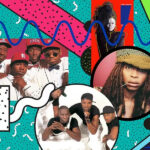“Eeny, meenie, miney, moe” – this simple phrase is known across the English-speaking world and beyond. More than just a nonsensical rhyme, the Eenie Meenie Miney Mo Song is a time-honored tool used by children for making choices, playing games, and even just for fun. Let’s delve into the world of this classic nursery rhyme and explore its lyrics, history, and the valuable lessons it offers.
Discovering the Versatility of Eenie Meenie Miney Mo
The eenie meenie miney mo song is fundamentally an elimination rhyme. Its primary function is to randomly select one person from a group, often for games or decisions. Imagine kids gathered in a circle, needing to decide who will be “it” in a game of tag, or which lucky individual gets the first pick of treats. This is where “Eeny Meenie Miney Mo” steps in, transforming a potentially complex decision into a lighthearted and fair process.
While seemingly simple, the eenie meenie miney mo song has roots that stretch back centuries. Versions of this rhyme have been traced as far back as the early 19th century, and possibly even earlier. Interestingly, these early versions often differed significantly from the modern rhyme we know today, showcasing a fascinating evolution over time.
Lyrics Through Time: From Hana Man to Catching Tigers
The most recognizable modern version of the eenie meenie miney mo song goes like this:
Eeny, meeny, miny, moe
Catch a tiger by the toe.
If he hollers let him go,
Eeny, meeny, miny, moe.
My mother told me
To pick the very best one
And you are [not] it.
However, history reveals a rich tapestry of earlier iterations. Consider this version from 1815, known as “Hana Man”:
Hana, man, mona, mike;
Barcelona, bona, strike;
Hare, ware, frown, vanac;
Harrico, warico, we wo, wac.
And another, from the 1820s, attributed to Kipling:
Eenie, Meenie, Tipsy, toe;
Olla bolla Domino,
Okka, Pokka dominocha,
Hy! Pon! Tush!
These older versions, while sounding quite different, share the same core purpose: selection through rhythmic chanting. The evolution of the lyrics reflects changes in language, cultural influences, and the simple process of children adapting and passing down the rhyme through generations.
Educational Benefits Beyond Just Fun
While primarily used for games and lighthearted choices, the eenie meenie miney mo song offers subtle yet valuable learning opportunities for children.
- Decision-Making: At its heart, the rhyme encourages decision-making, albeit in a playful context. Children learn that sometimes, choices need to be made quickly and fairly, and the rhyme provides a fun method for doing so.
- Language and Rhythm: The repetitive nature and rhythmic structure of the eenie meenie miney mo song aid in language development. Children become familiar with sounds, syllables, and rhythm, crucial elements in language acquisition.
- Vocabulary Expansion: Even in its simple form, the rhyme introduces basic vocabulary. Children might learn words like “catch,” “tiger,” and action verbs. Exploring different versions can further expand their word knowledge.
- Counting Skills (Implicitly): Though not explicitly a counting rhyme, the act of pointing to each person as the rhyme is recited subtly introduces the concept of counting and one-to-one correspondence.
Engaging Activities with Eenie Meenie Miney Mo
Beyond its traditional use, the eenie meenie miney mo song can be adapted for various educational and entertaining activities:
- Counting Games: Modify the rhyme to incorporate counting practice. For example, after “you are [not] it,” add “Let’s count to five!” and count together.
- Naming Games: Turn it into a vocabulary game. After the rhyme, instruct the child to name a category, like “name three animals” or “name two colors.”
- Creative Rhyme Extension: Encourage children to create their own verses or endings to the eenie meenie miney mo song, fostering creativity and language play.
Conclusion: The Enduring Charm of Eenie Meenie Miney Mo
The eenie meenie miney mo song stands as a testament to the power of simple rhymes in childhood. More than just a tool for choosing fairly, it’s a cultural touchstone, passed down through generations, offering fun, learning, and a universal way for children to navigate small decisions and big games. Its enduring appeal lies in its simplicity, rhythm, and the inherent fairness it brings to children’s play.
Frequently Asked Questions about Eenie Meenie Miney Mo
1. What is the origin of the Eenie Meenie Miney Mo song?
The exact origin is unknown, but versions of the rhyme date back to the early 19th century, evolving from even older counting rhymes and possibly influenced by various languages and cultures.
2. Are there different versions of the Eenie Meenie Miney Mo lyrics?
Yes, many variations exist, both historically and geographically. The lyrics have changed over time, with older versions often sounding quite different from the modern “catch a tiger” rhyme.
3. What are the educational benefits of Eenie Meenie Miney Mo?
Beyond being fun, the rhyme aids in decision-making, language development, rhythm recognition, and vocabulary expansion for children.
4. How can I use Eenie Meenie Miney Mo for activities?
Adapt it for counting games, naming games, creative rhyme extensions, and other playful learning activities to enhance its educational value.

